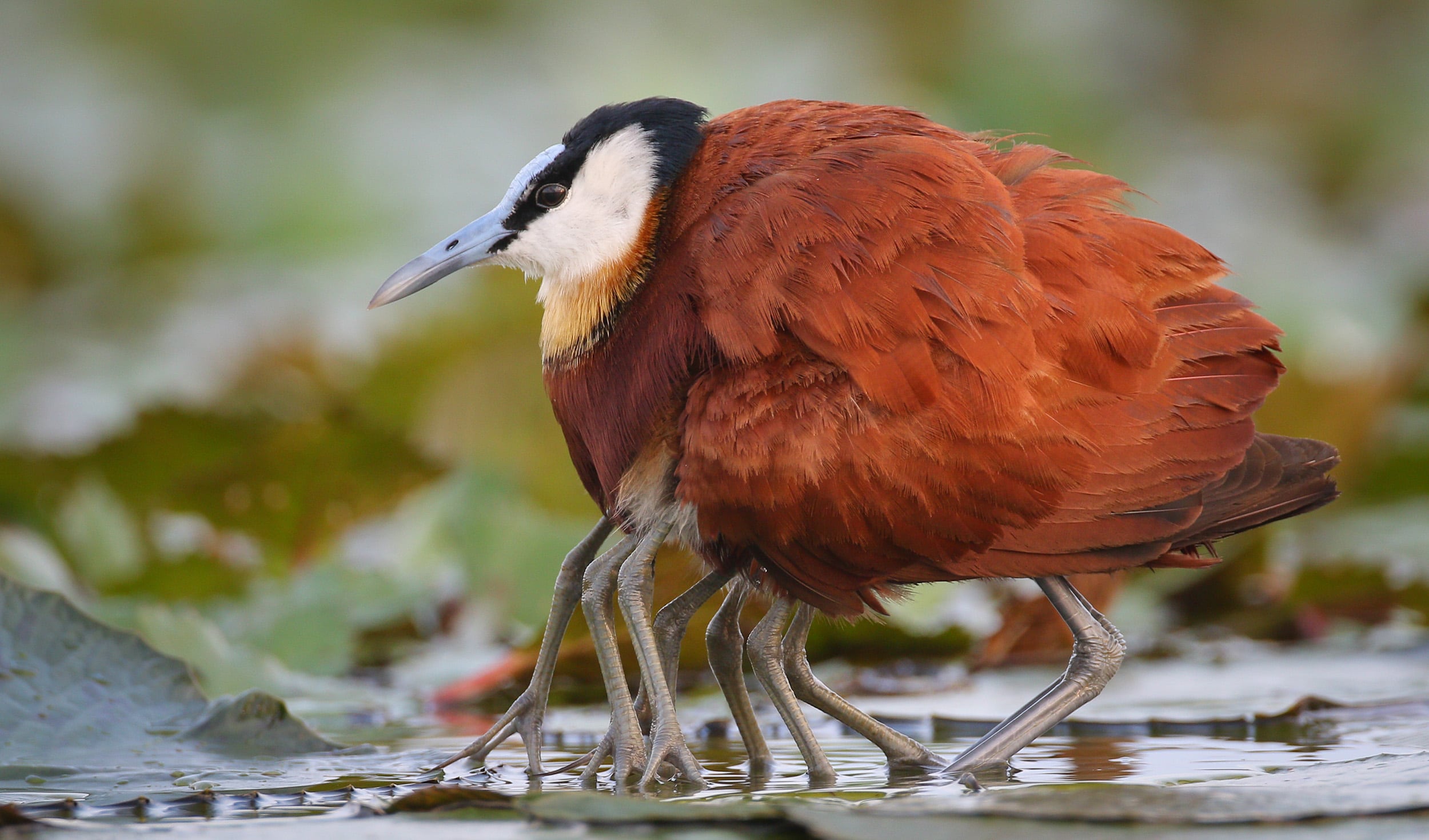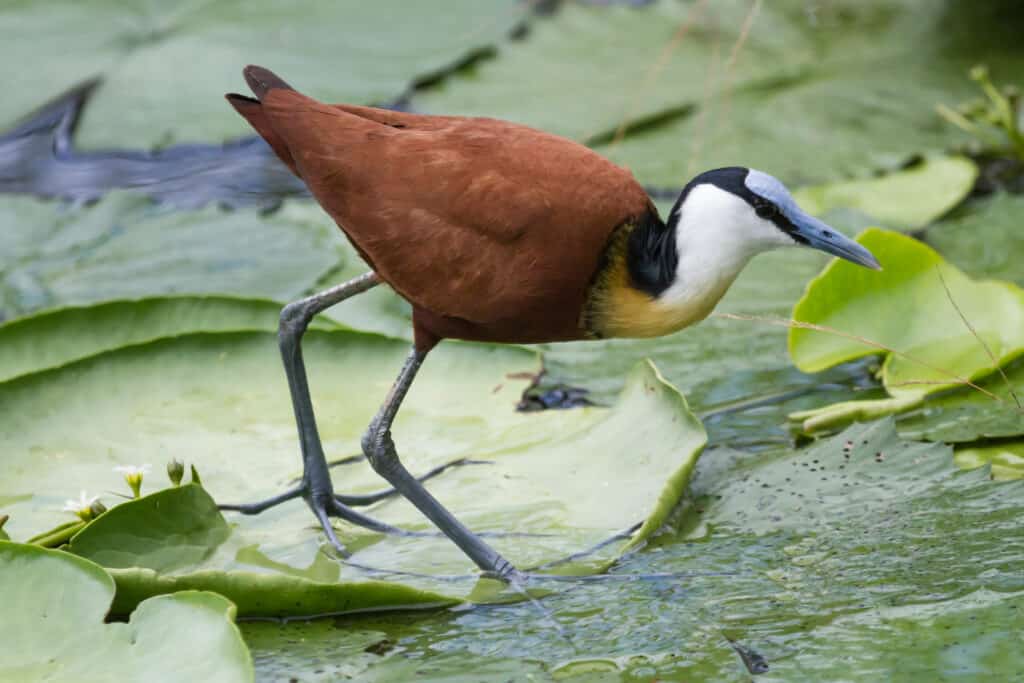The African jacana produces calls that sound like shrieks, groans, and barks.
The male raises the young and carries them under his wings.
They have enormous feet that allow them to walk on floating vegetation.
They are excellent swimmers and divers but not very strong fliers.
Chicks learn to dive underwater to protect themselves from predators.

Adult African jacanas are medium-sized waterbirds with long necks, long legs, and short tails. Their enormous feet are by far their most unique feature and feature elongated toes that help them walk on floating vegetation. Their length ranges between nine and 12 inches, with the females averaging slightly larger. They weigh around four to 12 ounces and have 20-inch wingspans. These jacanas are predominantly a reddish brown color with a yellow breast. Their head and neck are black on the back and white on the front with short blue bills and black eye strips.

These birds are highly vocal, producing loud shrieks, moans, and barks. Some of their vocalizations include flight calls and sharp alarm signals. Unlike other bird species, the African jacana males build the nests, incubate the eggs, and raise the young. The fathers are super protective and will often pick his babies up and hide them under his wings. Apart from walking on water, jacanas are also excellent swimmers and divers. Males teach their chicks to dive underwater and escape predators from a young age. While they can fly, they are weak and can only fly for short distances. Also, their feathers molt simultaneously, rendering them flightless until they grow back.

African jacanas can breed year-round, except for regions that experience a dry season, then seasonal breeding occurs. These birds have an unusual polyandrous mating season, where the female flees the nest as soon as she’s laid the eggs. She then moves on to her next mate, leaving the males alone to raise the young. The males build semi-submerged floating nests, and the females lay four eggs. After she goes, he will incubate the eggs for approximately 26 days. Thankfully, he doesn’t have to sit on them the entire time. The heat allows for natural incubation, and he may move the nest to a shaded area to prevent overheating.

The African Jacana population is mainly unstudied. They are estimated to have around one million mature individuals. Their numbers are considered stable without evidence of any declines. Their numbers also do not appear to experience extreme fluctuations or fragmentation. African jacanas are concentrated in the Central and Southern regions of Africa.








